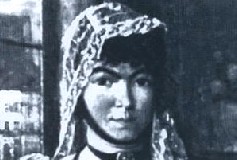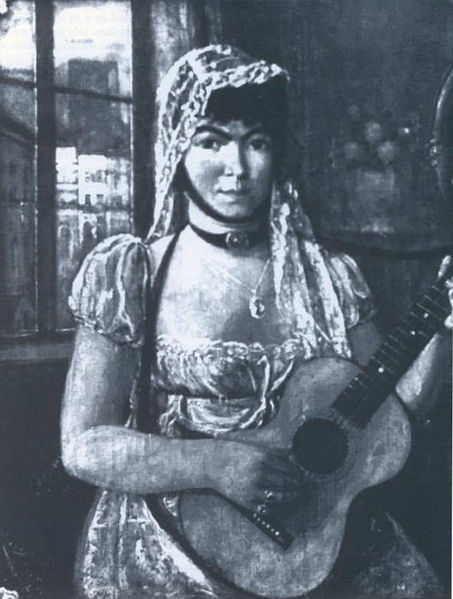Sophie Charlotte Elisabeth
Ursinus (born Weingarten) (5 May 1760 – 4 April 1836) was a German
serial killer who is believed to have been responsible for poisoning
her husband, aunt and lover, and of attempting to poison her servant.
Her trial led to a method of identifying arsenic poisoning.
Early life
Sophie Weingarten was born in Glatz (now Kłodzku),
a city in Lower Silesia, Prussia, the daughter of the secretary of the
Austrian legation. Her father having lost his position, at the age of
19 she married the much older counselor of the Supreme Court Theodor
Ursinus. She lived with him in Stendal until 1792 and afterwards in
Berlin. Privy Counsellor Ursinus died there, suddenly, on 11 September
1800, a day after celebrating his birthday. His wife came under
suspicion for not summoning a doctor, after the medicine she
administered to him made his condition worse.
During her marriage Sophie had started an affair
with a Dutch officer named Rogay, possibly with the consent of her
elderly husband. He left Berlin for a time, but later returned and
died three years before her husband. At the time his death was
attributed to tuberculosis. It was later discovered that shortly
before his death Sophie Ursinus had purchased a quantity of arsenic.
On 24 January 1801 an aunt of Sophie Ursinus,
Christiane Witte, died in Charlottenburg after a short illness,
leaving her a large inheritance. It was again later discovered that
Sophie Ursinus had purchased a large quantity of arsenic shortly
before her aunt had died.
At the end of February 1803 Sophie Ursinus's
servant, Benjamin Klein, became ill, after having quarreled with her
sometime earlier. She gave him an emetic, then soup, which made him
worse. He became suspicious and when she gave him some plums, he
secretly had them examined by a chemist, who confirmed that they
contained arsenic.
Autopsies and trial
Sophie Ursinus was arrested and soon came under
suspicion of having poisoned her husband. His body was exhumed but at
the autopsy the examiners, the chemist Martin Heinrich Klaproth and
his assistant, Valentin Rose, could not confirm that he had been
poisoned with arsenic. But there was a suspicion, from the general
condition of the bodily organs and convulsive contraction of the
limbs, that arsenic had been used to poison him. She was next charged
with murdering her aunt. Again the body was exhumed but this time the
examiners, contrary to what the doctors had said at her death, had no
doubt that the aunt had died from arsenic poisoning, and that Sophie
Ursinus had administered the poison.
The trial for murder ended on 12 September 1803. In
her attempt to save her life and honour Sophie Ursinus had disputed
every point, but was found guilty of the murder of her aunt and the
attempted murder of her servant, and was sentenced to life
imprisonment. She was allowed a certain amount of comfort while in
prison in Glatz, and was even allowed to have parties with guests and
dress in fine clothes. She was pardoned after thirty years in 1833 and
rejoined the upper-class society of Glatz until her death in 1836.
The work of Valentin Rose in proving that the
victims in this case were actually poisoned showed that the evidence
of doctors who were present at death was not sufficient. In 1836 the
Marsh test, a highly sensitive method in the detection of arsenic, was
developed by the chemist James Marsh.
Wikipedia.org
Sophie Charlotte Elisabeth
URSINUS
The daughter of an
Austrian diplomat, Sophie Weingarten was born in 1760.
At age 19 she married elderly privy councilor Ursinus of
Berlin, a loveless union arranged by her parents.
Ursinus ignored his
wife's steamy affair with a young Dutch officer named Rogay, and ¡t
carne to a bad end with Rogays premature death from "consumption."
Sophie's husband was the next to go, on September 11, 1800, and maiden
aunt Christina Witte followed on
January
23, 1801.
In
fact, while doctors suspected nothing, all three had been poisoned by
Sophie. Rogay had planned
to leave her for another woman, while the murders of Ursinus and her
aunt were strictly business, carried out for the inheritance she would
recelve. The chink in
Sophie's armor was a servant named Klein, who knew the details of her
crimes. When she suspected
him of planning to desert her, Sophie started dosing Klein with
poison, but he recognized the symptoms and was quick enough to save
himself, repaying her treachery with a full statement to the police.
Detectives called on Sophie's villa near Berlin, disrupting a game of
whist when they served the warrant for her arrest.
In custody she admitted poisoning Klein, bestowing a generous
pension upon her aggrieved servant.
A jury later convicted her of killing Christina Witte, and
Sophie was sentenced to life imprisonment.
Not that incarceration meant hardship, necessarily.
Transported to the prison at Glatz on the Silesian frontier,
Sophie was lodged in a deluxe suite of rooms normally reserved for the
warden. Comfortable
furniture was provided, along with servants to wait on the guests at
Sophle's frequent dinner parties.
Money was no problem, since the court allowed Sophle to keep
both her husbands estate and her inheritance from Aunt
Christina. Given the run of
the prison, she entertained lavishly until her death on April 4, 1836.
Sophie was laid to rest with great pomp in Glatz
cemetery, serenaded by a childrens choir while clergymen lined up to
praise her generosity. If
anyone recalled her victims, they refrained from mentioning such
awkward matters at the graveside service.


